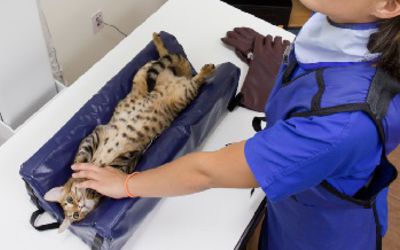
Veterinary radiography has evolved significantly over the years. Modern equipment, coupled with progressive techniques, ensures that our furry friends receive the top-notch care available. One key advancement in this realm is the use of vet x-ray positioning aids. This guide delves deep into the world of x-ray positioning aids, offering you a complete overview.
Understanding Vet X-ray Positioning Aids
Before delving into the specifics, let's first grasp the underlying concept. In simple terms, x-ray positioning aids assist veterinary specialists secure the most clear images while guaranteeing minimal discomfort for the animal. They play a crucial role in holding pets in the right position, lessening movement, and guaranteeing consistent, high-quality results.
Why are X-ray Positioning Aids Imperative in Veterinary Practice?
Safety for Both Animal and Technician: Reducing animal movement is important during x-ray processes. This not only promises clear images but also reduces the risk of radiation exposure for both the animal and the technician.
Consistent Image Quality: Consistency is key when it comes to x-rays. Vet x-ray positioning aids support in achieving that by ensuring animals are held in the proper posture for clear images.
Reduction in Retakes: If a pet moves during the x-ray operation, the chances are high that the images might emerge hazy. Positioning aids considerably reduce such situations, leading to fewer retakes.
Popular Types of Vet X-ray Positioning Aids
Foam Positioners: These lightweight and sturdy positioners are ideal for upholding the animal's body parts during radiography. They appear in various shapes and sizes designed to fit different animals and body parts.
Sandbags: They're outstanding for stabilising and positioning. Their weight aids prevent movement during the x-ray process.
Tape and Straps: These can be applied to fasten limbs in place. They're soft on the skin and can be adjusted according to the pet's comfort.
Immobilisation Devices: For pets that are exceptionally restless, immobilisation devices can offer a safe way to maintain them still during the x-ray procedure without causing any discomfort.
Selecting the Right X-ray Positioning Aids for Your Veterinary Clinic
With the assortment of aids accessible, picking the correct one might appear daunting. However, ponder on the following factors:
Type of Animals Treated: A clinic predominantly working with small pets might have different demands than one dealing with larger animals.
Frequency of Use: Sturdy positioning aids are a requirement for busy clinics.
Budget: While it's vital not to compromise on quality, vet clinics also need to guarantee they're making economical decisions.
Tips for Using Vet X-ray Positioning Aids Effectively
Training is Essential: Guarantee that all your staff are properly trained in using the aids. This will ensure the safety and comfort of the animals while getting the best possible x-ray images.
Regular Maintenance: Like all tools, vet x-ray positioning aids also degrade with time. Consistently check for wear and tear and swap them when required.
Prioritise Comfort: While getting the ideal image is imperative, it's equally important to make sure the animal's comfort. Always make sure that any restraints or positioners used are not causing any discomfort to the animal.
Vet x-ray positioning aids have changed the field of veterinary radiography. They have not only made certain the generation of clear, high-quality images but have also played a vital role in boosting the safety and comfort of the pets enduring the process. As veterinary specialists, it's our responsibility to ensure we're armed with the best tools and knowledge to give our furry customers the best care imaginable.
If you're looking to upgrade your veterinary clinic with the newest x-ray positioning aids or need more information about them, visit xray4vets. Dive into a world of advanced veterinary devices and improve the care you give to your treasured animal patients.